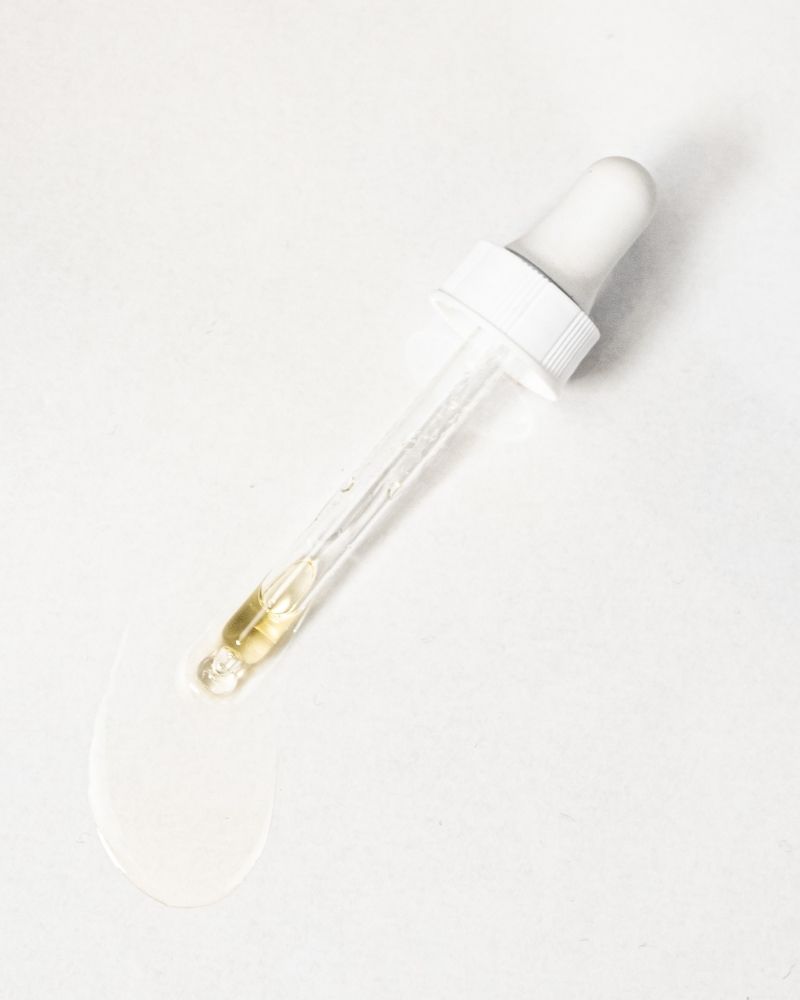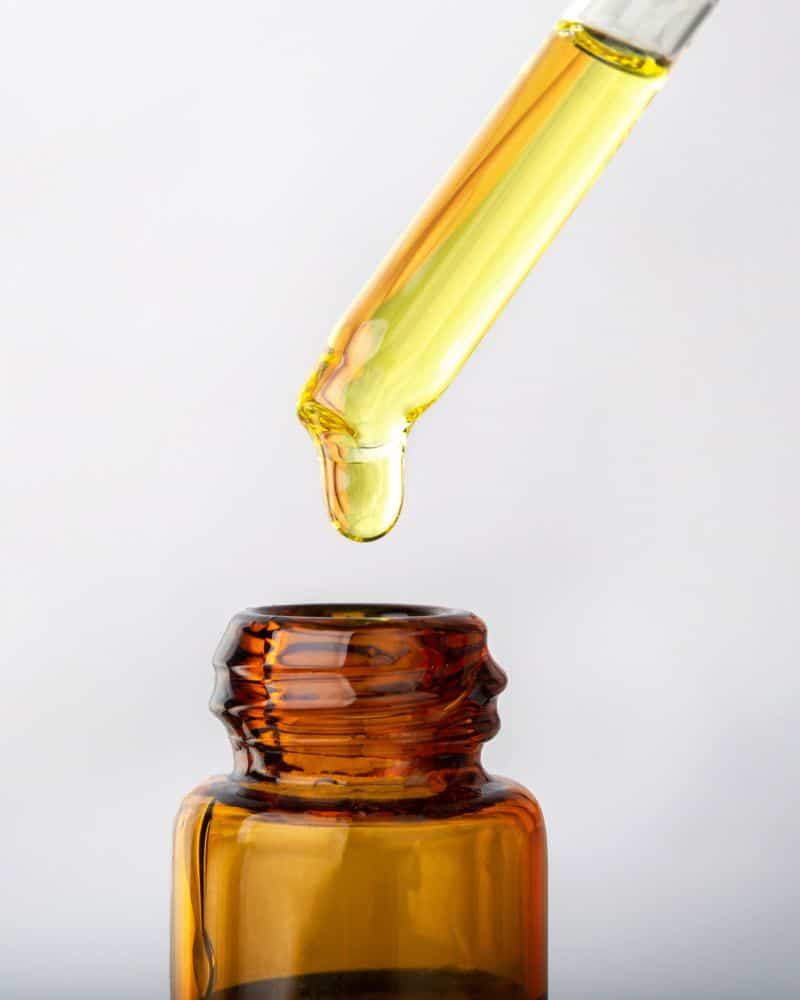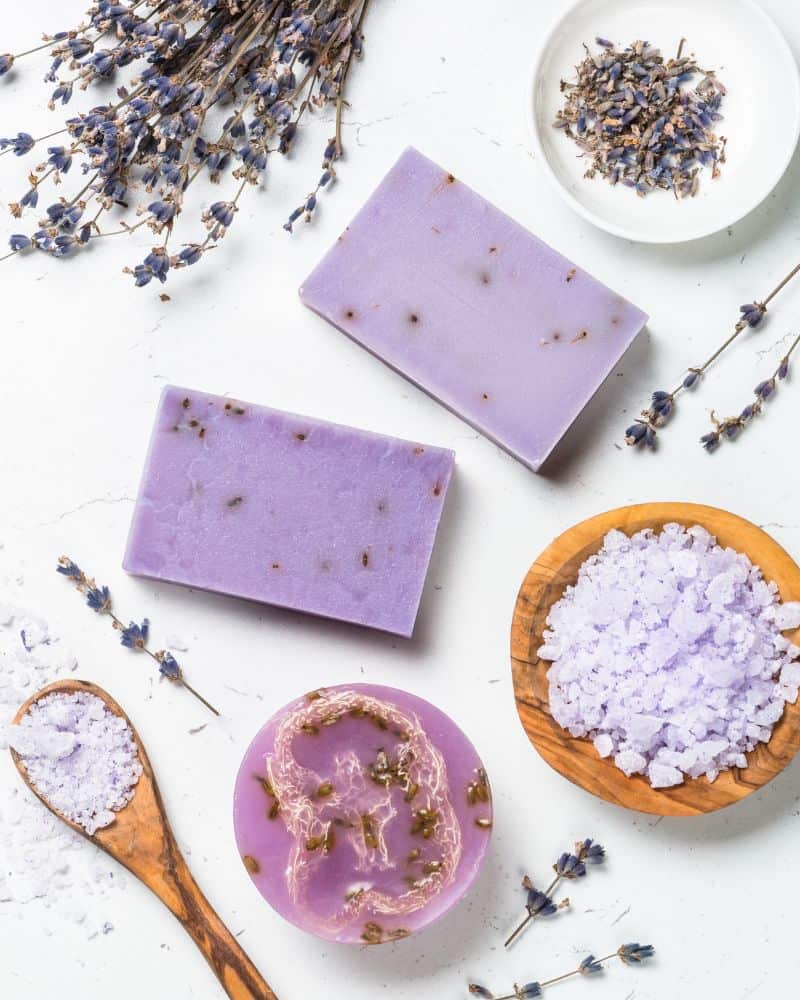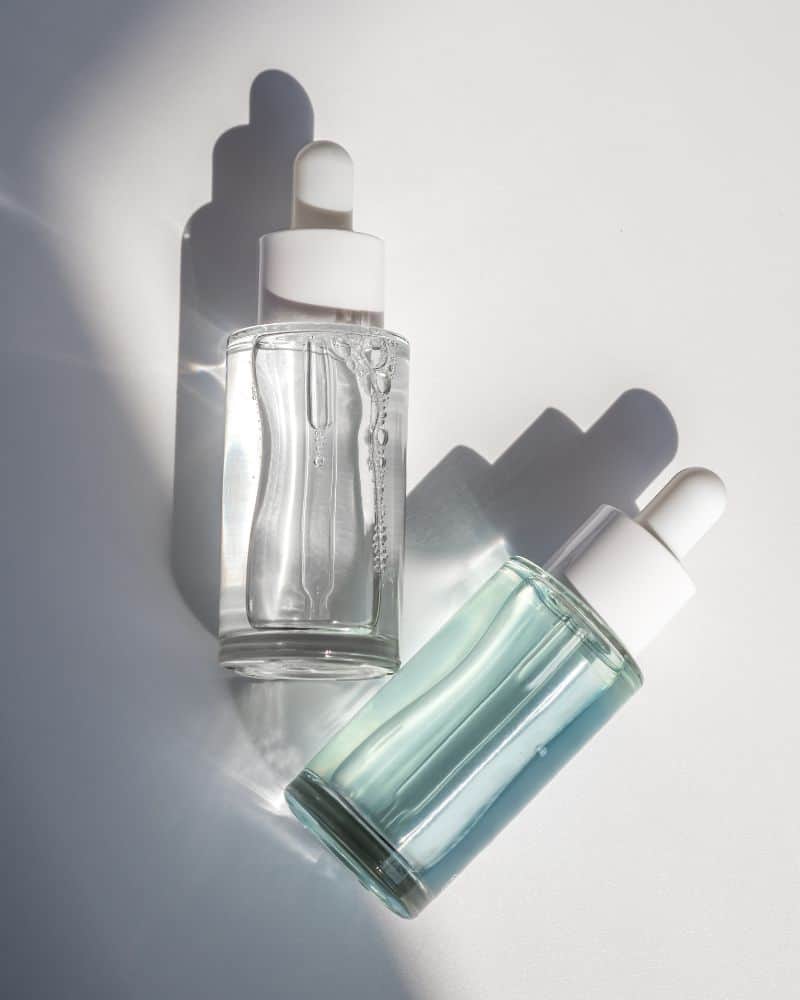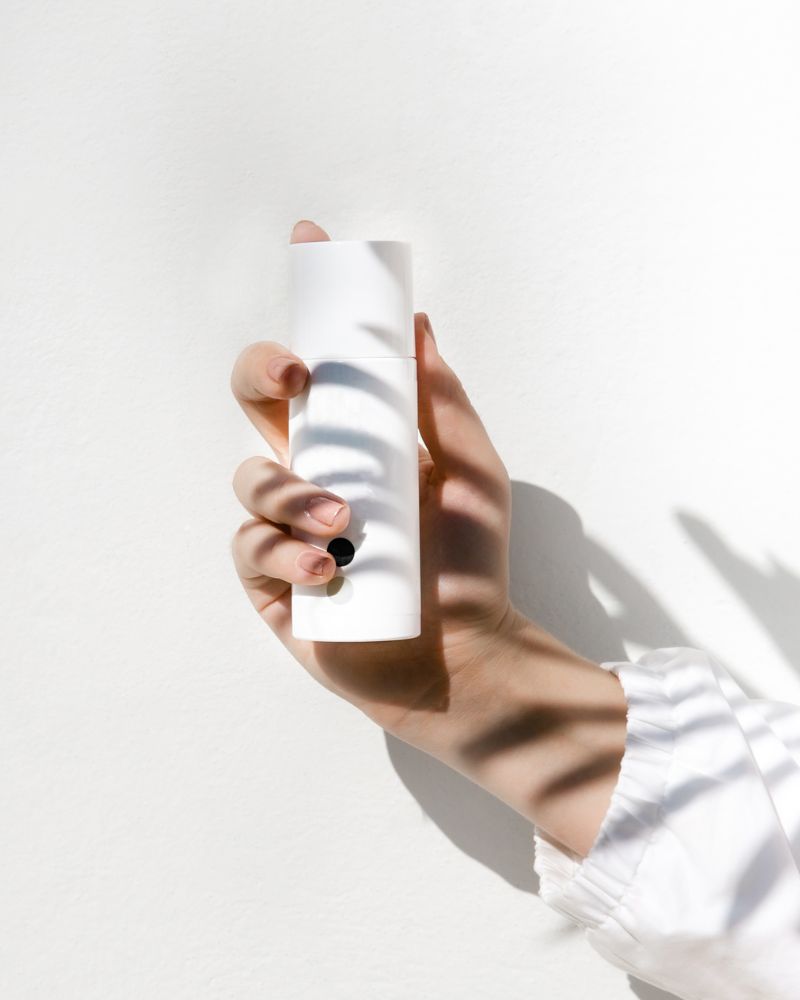Lactic Acid And Retinol: Everything You Need to Know
This post may contain affiliate links.
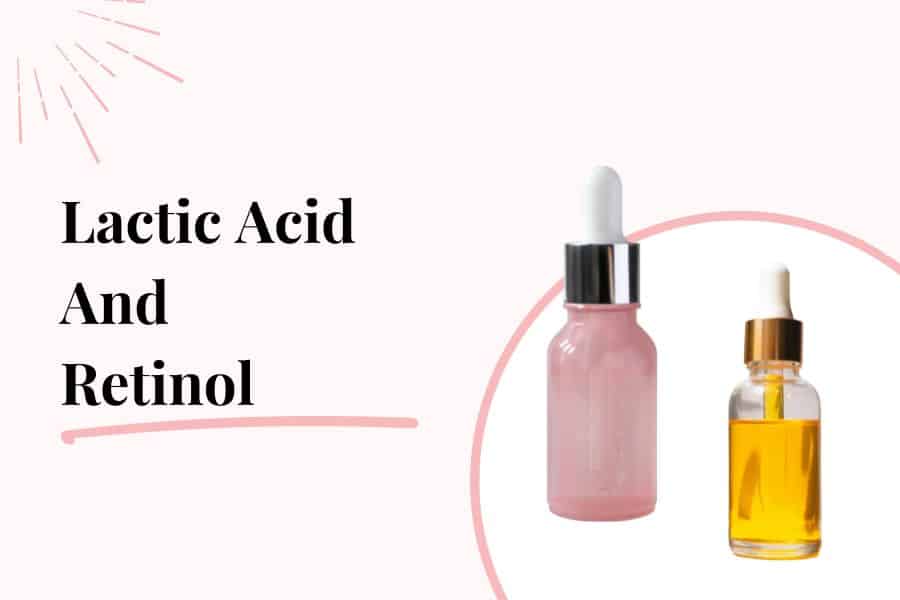
You may have heard of lactic acid and retinol being buzzed about in the skincare world, but what do these ingredients actually do? Lactic acid is an alpha hydroxy acid (AHA) that exfoliates the skin while retinol is a type of vitamin A that speeds up cell turnover. Both of these ingredients offer a plethora of benefits for the skin, but can they be used together in your skincare routine? Let’s dive into lactic acid vs retinol to find out.
What is Lactic Acid
Lactic acid is a type of alpha hydroxy acid (also known as an AHA). Lactic acid is usually derived from milk. Lactic acid, like all AHA’s, are great for mild exfoliation to reveal smoother, brighter and softer skin. Lactic acid works by dissolving the bonds that hold dead skin cells together. This helps to slough off dead skin cells, unclog pores and reveal the brighter, newer skin cells underneath.
Lactic acid is a milder AHA, making it an excellent choice for those who have sensitive, dry, or dehydrated skin.It has a larger molecule size than other acids, which means it cannot penetrate as deeply into the skin, which is why it’s more gentle. That said, lactic acid works more on the surface level, rather than deep down into the skin.
AHAs are highly effective at exfoliating the skin and helping grow new skin cells, which can improve the appearance of wrinkles, fine lines, and age spots on the skin’s surface. Lactic acid is also known for its hydrating properties, making it a great choice for those with dry or sensitive skin types.
Lactic acid is available in a variety of forms, including gels, creams, serums, and peels. It can be found in both over-the-counter and prescription skincare products.
Benefits Of Lactic Acid
Lactic acid is a natural alpha hydroxy acid that is extracted from milk. It is an important component of the skin’s natural moisturizing factor (NMF) and plays a key role in maintaining the skin’s hydration levels.
Lactic acid helps to keep the skin hydrated by attracting and retaining water molecules. It also helps to remove dead skin cells, which can clog pores and lead to acne breakouts. Lactic acid is gentle enough for use on all skin types, and it can be used daily to achieve healthy, glowing skin.
Some of the benefits of lactic acid for skin care include:
- Smooths skin texture – lactic acid can help to improve the appearance of rough, dry skin by dissolving the bonds that hold dead skin cells together. This allows for the dead skin cells to be sloughed away, revealing brighter, smoother skin
- Fades hyperpigmentation – lactic acid can help to lighten dark spots and hyperpigmentation by exfoliating the top layer of skin which will gradually fade any hyperpigmentation or sun spots
- Moisturizes – lactic acid is a humectant, meaning it helps the skin to retain moisture. This makes it a great choice for those with dry or dehydrated skin types
- Reduces signs of aging – lactic acid can help to reduce the appearance of fine lines and wrinkles by stimulating collagen production and increasing cell turnover
What is Retinol
The next product that we’re going to dive into is retinol. This is perhaps one of the most popular ingredients on the market and for good reason. Retinol is a type of vitamin A that speeds up cell turnover, which can help to fade hyperpigmentation, treat and prevent acne and more. This ingredient works by increasing collagen production, which can help to reduce the appearance of fine lines, wrinkles, and age spots.
Retinol is a form of vitamin A that’s found in many skincare products. Most dermatologists agree that retinol is one of the best ingredients you can use to take care of your skin no matter what your skin type or skin concerns are. Just like hyaluronic acid, retinol has a ton of amazing skin benefits.
Retinol is a type of retinoid, which are a family of Vitamin A compounds. Retinol is the OTC form of vitamin A, while stronger retinoids (like tretinoin or retin a) require a prescription.
Related post: A Guide To Retinol’s Shelf Life
Benefits of Retinol

Retinol is a form of vitamin A that has been shown to have numerous benefits for skin care. It can improve signs of aging like fine lines and wrinkles, treat acne and acne scars, and even fade dark spots and hyperpigmentation.
- Treats & prevents acne – retinol helps to treat active acne and speed up healing time, but also prevent future breakouts by unclogging pores
- Anti-aging – Retinols are the gold standard for anti-aging because its ability to plump skin, diminish fine lines and wrinkles and stimulate collagen and elastin production
- Fades hyperpigmentation – From acne scars, melasma, sun spots or any other kind of pigmentation issue, retinol is the quickest way to fade it because of its ability to dramatically speed up cell turover
- Acne Scarring – Indented acne scars, like boxcar or icepick scars require some seriously powerful treatments. Retinol is a great treatment that helps to stimulate new collagen to fill in those scars
- Improves texture – Retinol can smooth out any kind of textural issues like closed comedones, dead skin cell buildup and more
- Improves skin tone – Retinol helps to dramatically brighten and even out skin tone for a more radiant and healthy appearance
- Reduces pore size – Retinol helps to unclog pores and gets rid of all the gunk inside that stretches them out, making them appear smaller and less noticeable
- Protects skin – Retinol thickens the epidermis which helps to protect skin against environmental aggressors that can cause skin damage and aging
Differences Between Retinol and Lactic Acid
There are several key differences between retinol and lactic acid.
Retinol is a vitamin A derivative that is found in many anti-aging skincare products. It is a proven wrinkle reducer and can also help improve skin tone and texture.
Lactic acid is a natural exfoliator that dissolves the bonds that hold dead skin cells together. It also has hydrating properties that can help improve the appearance of dry skin.
Here are some key differences between lactic acid and retinol.
Retinol is a Better Wrinkle Reducer
Retinol has been shown to be more effective at reducing wrinkles than lactic acid. In one study, retinol was found to reduce the appearance of wrinkles by up to 36% after 12 weeks of use. Lactic acid, on the other hand, only reduced the appearance of wrinkles by 10% after 12 weeks.
Retinol is More Irritating
Retinol tends to be more irritating than lactic acid. This is because it is a stronger exfoliant that can cause redness, dryness, and peeling, especially if you’ve never used it before. If you have sensitive skin, lactic acid may be a better choice.
Lactic Acid is More Hydrating
Lactic acid is a natural humectant, which means it draws moisture into the skin. This can help to improve the appearance of dry, flaky skin. Retinol, on the other hand, can actually cause dryness and irritation if not used properly and does not have any hydrating properties like lactic acid.
Can You Use Lactic Acid And Retinol Together?
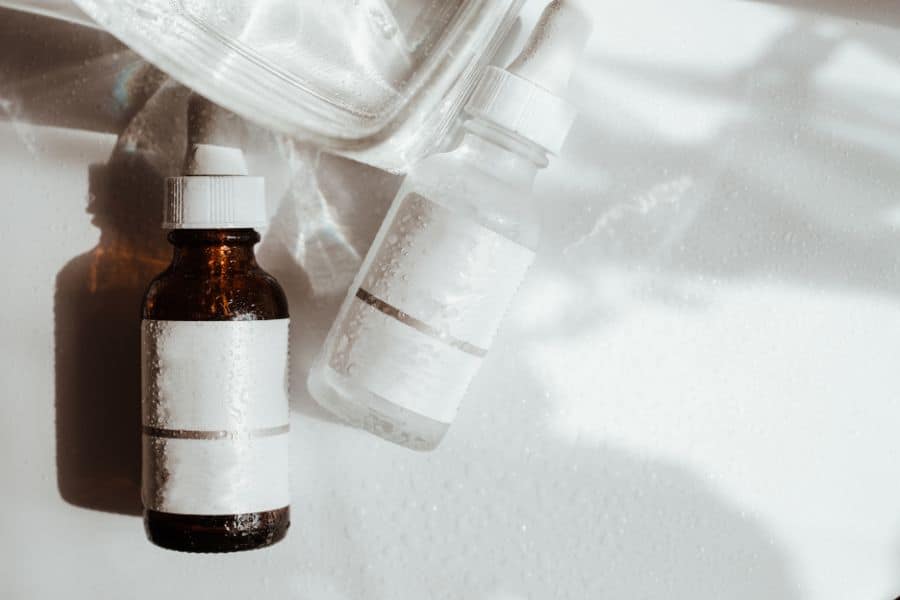
Yes, you can use lactic acid and retinol together. In fact, using these two ingredients together can actually help to boost the results of both. While they both help to exfoliate the skin, they work in different ways.
Retinol speeds up skin cell turnover, which helps to improve the appearance of wrinkles, fine lines, and uneven skin tone.
Lactic acid dissolves the bonds that hold dead skin cells together, which helps to improve texture and brighten the skin.
Using these two ingredients together can help to improve the overall appearance of your skin.
In fact, studies have shown that lactic acid and retinol can work together to improve photo-damage (sun spots, hyperpigmentation, fine lines and wrinkles).
In another study, glycolic acid and retinol were used together to improve the appearance of acne scars. After 12 weeks, a significant improvement in acne scars were seen in over 90% of the patients.
If you’re going to use lactic acid and retinol together, it’s important to start slowly. Begin by using each ingredient once a week. If your skin can tolerate it, you can increase the frequency to 2
If you’re going to use lactic acid and retinol together, it’s important to start slowly. Begin by using each ingredient once a week and gradually increase the frequency as your skin adjusts.
Related post: Can You Use Lactic Acid with Niacinamide?
How To Use Lactic Acid And Retinol Together
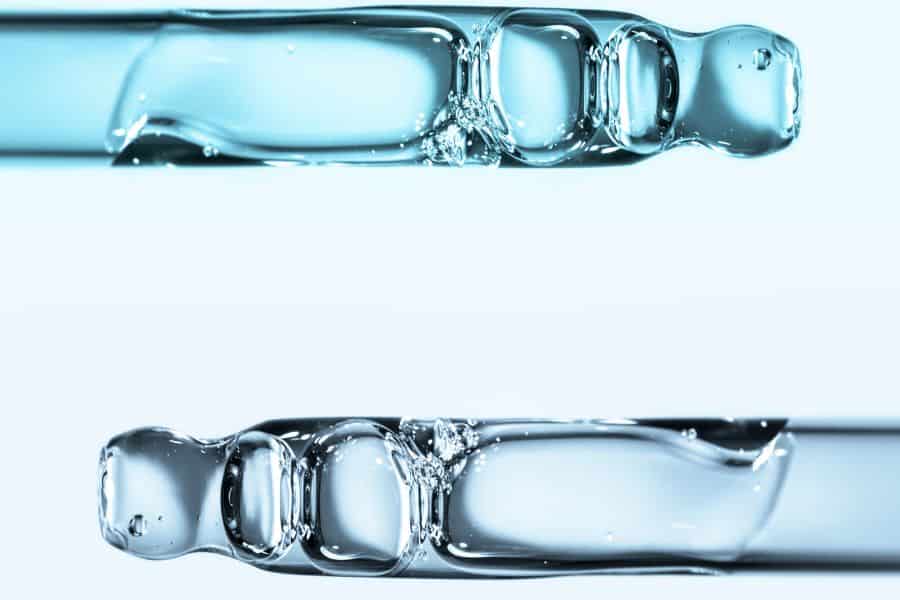
If you want to use lactic acid and retinol together In your skincare routine, there are a few things you need to keep in mind.
You’ll want to introduce one product at a time. Start by using either lactic acid or retinol a few times a week and you can adjust this once your skin gets used to the product. Then you can add in the other product.
While you can layer lactic acid and retinol together, it may be best to use them separately in your routine. For example, you can use lactic acid one night and then use retinol the next night. However, if you do want to use them together, you can safely do so. Just be sure to look out for any signs of irritation or dryness.
Using two exfoliants can lead to overexfoliation and a damaged skin barrier.
You’ll also want to make sure that you’re using a sunscreen during the day when using these products. This is because both lactic acid and retinol can make your skin more sensitive to the
Lactic Acid Vs Retinol FAQs
Is lactic acid the same as retinol?
No, lactic acid and retinol are not the same. Retinol is a vitamin A derivative that speeds up cell turnover and increases collagen production to help with acne, signs of aging and hyperpigmentation.
Lactic acid is an alpha hydroxy acid that exfoliates the skin by breaking down the bonds between dead skin cells. It also has hydrating properties that can help improve the appearance of dry skin.
Should I use lactic acid with retinol?
Yes you can use lactic acid with retinol and the two together can actually help to boost the results of both. It’s important to start slowly by introducing one product at a time and using them separately in your routine before layering them together.
Should I use retinol or lactic acid first?
If you’re using both lactic acid and retinol together, you might be wondering which product to use first.
Generally, I would recommend using the lactic acid first, as it has a lower pH. Wait 10-20 minutes and then you can use the retinol.
Lactic Acid Vs Retinol: Wrap Up
Lactic acid and retinol are both powerhouse ingredients that can provide a host of benefits for your skin. When used together, they can help to exfoliate, brighten, smooth, and plump the skin. These two ingredients are both fabulous on their own but they’re even better when used together. Luckily, lactic acid and retinol can be used together without any worries of pH imbalances or irritation. Just be sure to start slowly and increase the frequency as your skin gets used to the products. And, as always, don’t forget to use sunscreen!

